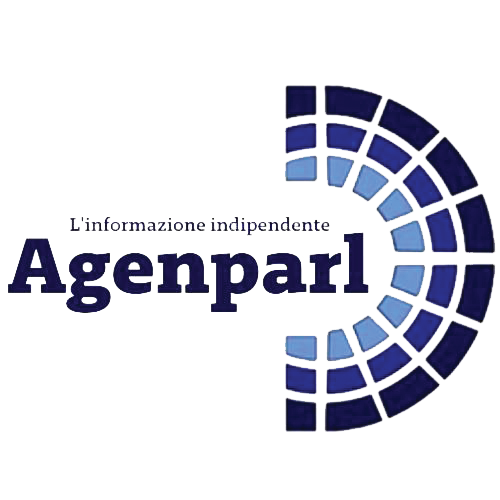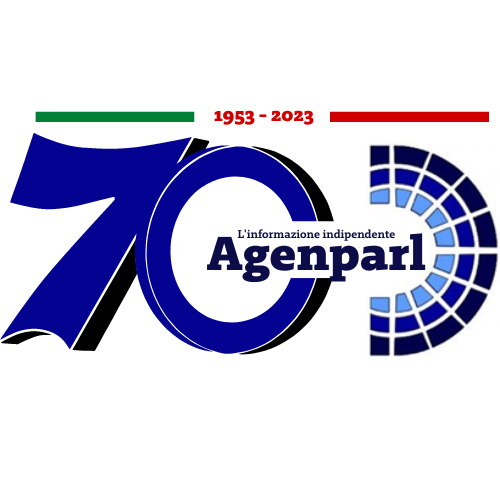 (AGENPARL) - Roma, 12 Settembre 2025
(AGENPARL) - Roma, 12 Settembre 2025(AGENPARL) – Fri 12 September 2025 A weekly compendium of media reports on science and technology achievements
at Lawrence Livermore National Laboratory. Though the Laboratory reviews
items for overall accuracy, the reporting organizations are responsible for
the content in the links below.
LLNL Report, Sept. 12, 2025
Schematic of a scalable ion-trap architecture based on 3D printing.
Tiny traps for ions
To make some quantum computers larger, and therefore more powerful, we may
have to 3D-print them.
Currently, there is no consensus on the single best design for quantum
computers, but researchers agree that to become unambiguously useful, quantum
computers will have to be made larger. For those that use ions as quantum
bits, or qubits, a key building block is called an “ion trap”. A team of
scientists has now developed a 3D-printing technique for miniaturized ion
traps, which could make it easier to combine many of them into one large
computer.
The researchers 3D-printed traps that were just a few hundred microns across.
In extensive laboratory tests, these beat more conventional designs.
Team member Xiaoxing Xia at Lawrence Livermore National Laboratory in
California says that 3D-printing is a perfect match for the problem at hand,
because it can make small and complex objects with fewer restraints than
methods more akin to chip manufacturing. This means the researchers could
follow the success of their tiny ion trap with more innovative and novel
designs.
Read More
Samples of algae were taken from the Eel River (left) and measured with
NanoSIMS (center). The results, right, demonstrate that a symbiotic bacterium
fixes nitrogen inside the algae. (Image: Ty Samo/LLNL)
A natural fish food factory
https://news.nau.edu/salmon-epithemia-study/
In northern California, salmon are more than just fish — they’re a
cornerstone of tribal traditions, a driver of tourism and a sign of healthy
rivers. So it may not come as a surprise that NAU, University of California
Berkeley and Lawrence Livermore National Laboratory scientists working along
the region’s Eel River have discovered a micro-scale nutrient factory that
keeps rivers healthy and allows salmon to thrive.
The scientists’ new study in Proceedings of the National Academy of
Sciences reveals how a partnership between algae and bacteria works like
nature’s clean-nitrogen machine, turning nitrogen from the air into food
that fuels river ecosystems. The hidden nutrient factory boosts populations
of aquatic insects, which young salmon rely on for growth and survival.
At the heart of the scientists’ discovery is a type of diatom — a
single-celled aquatic plant in a glass-like shell — called Epithemia. The
golden-brown diatom, smaller than a grain of table salt and approximately the
width of a human hair, plays a massive role in keeping rivers productive.
Read More https://news.nau.edu/salmon-epithemia-study/
Diodes are core components of the high-energy, high-repetition-rate lasers
that would be required to ignite fusion capsules in an IFE power plant.
(Star)fired up for diodes
https://optics.org/news/16/9/13
The Starfire Hub — an initiative funded by the U.S. Department of Energy to
develop fusion energy solutions under the leadership of Lawrence Livermore
National Laboratory — has announced the addition of five new members to its
Diode Technology Working Group.
Two German research institutes and three companies have joined with the LLNL,
adding further breadth to the hub’s expertise in diode technology and,
strengthening Starfire’s collaborative effort to advance the technology
basis for inertial fusion energy (IFE).
“We’re excited to welcome a distinguished group of organizations to
Starfire. Their collective expertise will be instrumental in accelerating the
development of diode technology needed to make inertial fusion energy a
reality,” said LLNL’s Will Fenwick, Chair of the Diode Technology Working
Group.
The latest Starfire announcement states, “To make inertial confinement
fusion usable for power plants, fundamentally new plant concepts based on
diode technology are required.”
Read More https://optics.org/news/16/9/13
Diagram depicting where alternate PNT methods would be useful versus
impractical.. (Credit: Mary Burkey/LLNL)
Could quantum map out your future road trip?
Pentagon Doubling Down on Alternatives to GPS That Aren’t in Space
The U.S. military is doubling down on non-space-based alternatives to GPS,
the ubiquitous position, navigation, and timing (PNT) service provided by the
U.S. Space Force, with new funding for the development and testing of
operational prototypes of quantum-based devices that don’t depend on easily
jammable signals from satellites.
A report in June from the Lawrence Livermore National Laboratory identified
three quantum sensing-powered technologies as being promising for alternative
PNT. Inertial navigation works by tracking where and how fast a vehicle is
moving and applying that to a known location where it was. Typically inertial
devices “drift,” meaning their estimate of their location becomes less
accurate over time, and must be re-baselined with a new, currently accurate
location at regular intervals. Because quantum sensors are orders of
magnitude more sensitive than their conventional counterparts, it is in
theory possible to build an inertial location device that doesn’t need
recalibrating and can maintain its accuracy independently.
The other two quantum-based approaches identified in the Lawrence Livermore
report use tiny variations in the earth’s magnetic field or in its
gravitational field.
Read More
Pentagon Doubling Down on Alternatives to GPS That Aren’t in Space
The Open Match Giving Campaign is part of Giving Pathways; a new suite of
year-round charitable initiatives.
A pathway to doubled donations
Lawrence Livermore National Laboratory (LLNL) has concluded its inaugural
Open Match Giving Campaign, the first of several new charitable initiatives
under the Lab’s Giving Pathways program, which operates under the Helping
Others More Effectively (HOME) Campaign umbrella. This campaign, which ran
from May 12 through Aug. 31, 2025, empowered employees to support their
favorite IRS-qualified nonprofits using debit card, credit card or
donor-advised fund donations — all with the benefit of a generous match
provided by Lawrence Livermore National Security, LLC (LLNS).
The campaign saw enthusiastic participation, with employees showing strong
support, especially in the final month. From the campaign’s launch through
the end of July, 121 unique donors contributed a total of $48,534. In August
alone, however, employees donated an impressive $122,704. Thanks to the LLNS
matching program, these August contributions were further amplified by
$84,242 in matching funds.
Overall, the campaign raised $276,341, including both employee donations and
LLNS matching funds, supporting more than 370 different organizations and
causes.
Read More
——————————————————————————
Founded in 1952, Lawrence Livermore National Laboratory https://www.llnl.gov
provides solutions to our nation’s most important national security
challenges through innovative science, engineering and technology. Lawrence
Livermore National Laboratory is managed by Lawrence Livermore National
Security, LLC for the U.S. Department of Energy’s National Nuclear Security
Administration.
Read previous Lab Report articles online https://www.llnl.gov/news/lab-report
Unsubscribe from this newsletter
